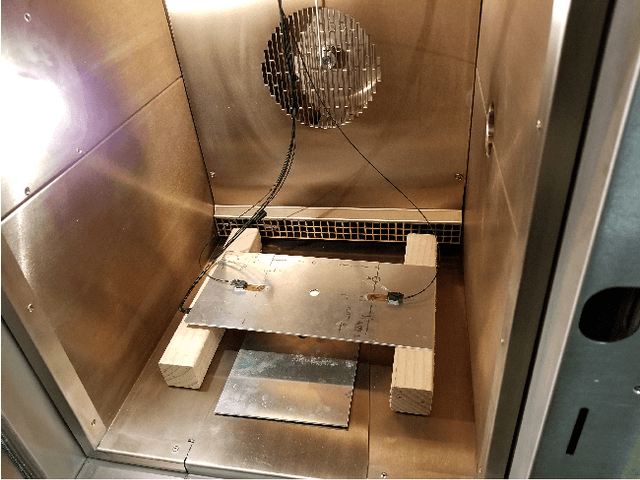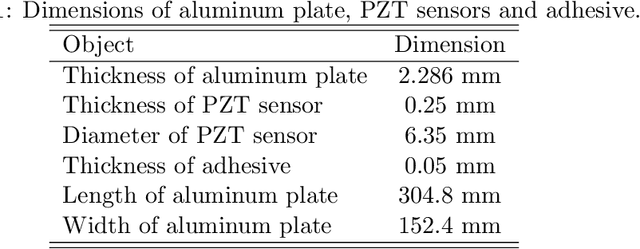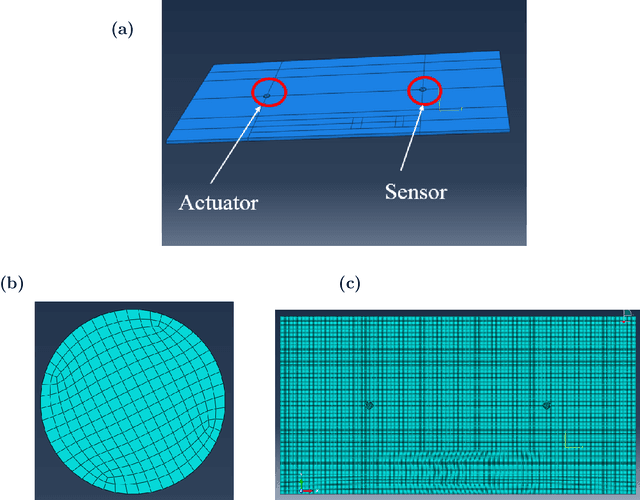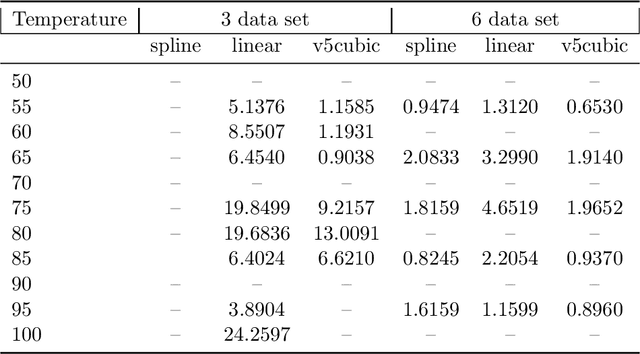Shabbir Ahmed
Stochastic Identification-based Active Sensing Acousto-Ultrasound SHM Using Stationary Time Series Models
Jan 26, 2022Abstract:In this work, a probabilistic damage detection and identification scheme using stochastic time series models in the context of acousto-ultrasound guided wave-based SHM is proposed, and its performance is assessed experimentally. In order to simplify the damage detection and identification process, model parameters are modified based on the singular value decomposition (SVD) as well as the principal component analysis (PCA)-based truncation approach. The modified model parameters are then used to estimate a statistical characteristic quantity that follows a chi-squared distribution. A probabilistic threshold is used instead of a user-defined margin to facilitate automatic damage detection. The method's effectiveness is assessed via multiple experiments using both metallic and composite coupons and under various damage scenarios using damage intersecting and damage non-intersecting paths. The results of the study confirm the high potential and effectiveness of the stochastic time series methods for guided wave-based damage detection and identification in a potentially automated way.
Time-varying Identification of Guided Wave Propagation under Varying Temperature via Non-Stationary Time Series Models
Jan 12, 2022



Abstract:Modern-day civil, mechanical, and aeronautical structures are transitioning towards a continuous, online, and automated maintenance paradigm in order to ensure increased safety and reliability. The field of structural health monitoring (SHM) is playing a key role in this respect and active sensing acousto-ultrasound guided-wave based SHM techniques have shown great promise due to their potential sensitivity to small changes in the structure. However, the methods' robustness and diagnosis capability become limited in the presence of environmental and operational variability such as changing temperature. In order to circumvent this difficulty, in this paper, a novel stochastic time series-based framework was adopted to model guided wave propagation under varying temperatures. Different stochastic time-varying time series models, such as Recursive Maximum Likelihood Time-varying Auto-Regressive (RML-TAR) and Recursive Maximum Likelihood Time-varying Auto-Regressive with Exogenous Excitation (RML-TARX) models are put forward to model and capture the underlying dynamics of guided wave propagation under varying temperatures. The steps and facets of the identification procedure are presented and clearly explained. Then the identified models are used to perform one-step-ahead prediction as well as "simulation" of the guided wave signals. In order to gain insight from a physics perspective, high-fidelity finite element (FE) models were also established to model the effect of temperature variation on guided wave propagation. Finally, surrogate models are formulated through the use of stochastic time-dependent RML-TARX models and compared with the FE models under varying temperatures.
Learning to Solve Large-Scale Security-Constrained Unit Commitment Problems
Feb 04, 2019



Abstract:Security-Constrained Unit Commitment (SCUC) is a fundamental problem in power systems and electricity markets. In practical settings, SCUC is repeatedly solved via Mixed-Integer Linear Programming, sometimes multiple times per day, with only minor changes in input data. In this work, we propose a number of machine learning (ML) techniques to effectively extract information from previously solved instances in order to significantly improve the computational performance of MIP solvers when solving similar instances in the future. Based on statistical data, we predict redundant constraints in the formulation, good initial feasible solutions and affine subspaces where the optimal solution is likely to lie, leading to significant reduction in problem size. Computational results on a diverse set of realistic and large-scale instances show that, using the proposed techniques, SCUC can be solved on average 12 times faster than conventional methods, with no negative impact on solution quality.
 Add to Chrome
Add to Chrome Add to Firefox
Add to Firefox Add to Edge
Add to Edge